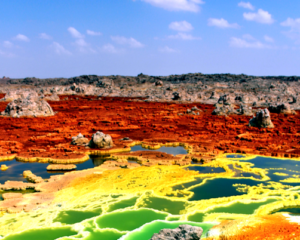In the high-altitude regions of the Himalayas, a small, fluffy mammal known as the pika is busy preparing for the harsh winter months. These adorable creatures, often mistaken for rodents, are actually more closely related to rabbits. But what makes them truly fascinating is their unique strategy for surviving the cold: they wait for specific weather cues before making their winter plans.
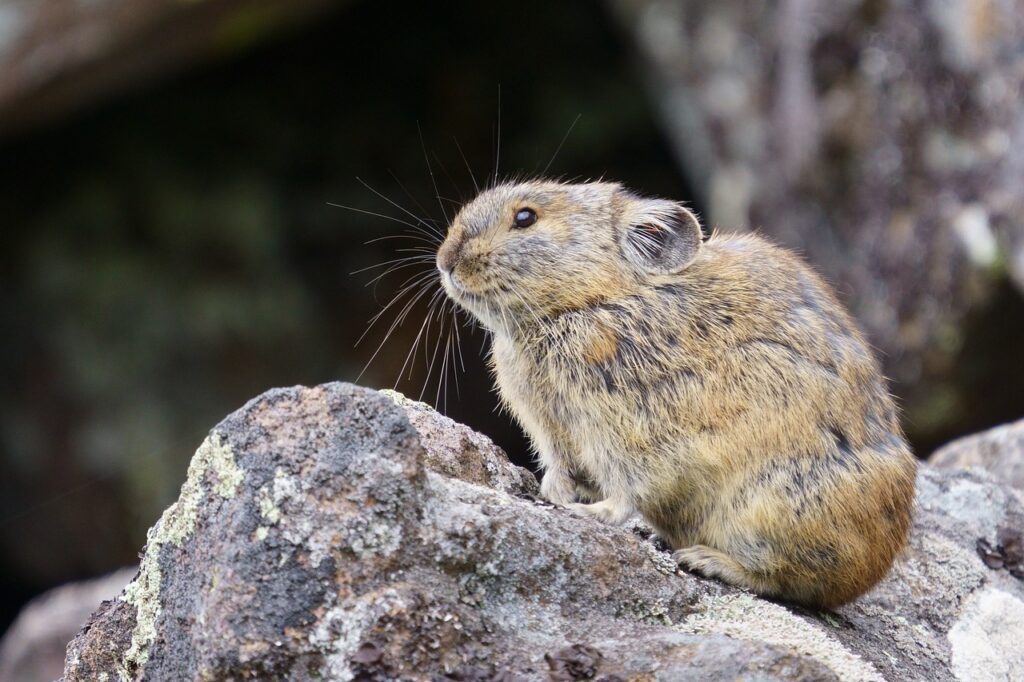 Pin
Pin Image by makieni777 from Pixabay
Table of Contents
The Role of Weather in Pika Behavior
 Pin
Pin Image by Tim Ulama from Pixabay
Himalayan pikas, especially the Ladakh (Ochotona ladakhi) and Nubra (Ochotona nubra) species, are small, herbivorous mammals adapted to the harsh, alpine environments of the Himalayas. Their survival strategies are intricately linked to the seasonal changes dictated by local weather patterns, particularly as they prepare for the winter months.
One of the most critical behaviors of pikas is food caching, which involves collecting and storing various plants and herbs during the warmer months. This preparation is essential for their survival, as winter in the Himalayas can be extremely brutal, with heavy snowfall and sub-zero temperatures making food scarce. Recent studies have shown that pikas carefully monitor weather conditions to determine the optimal timing for their caching activities.
Pikas are highly sensitive to temperature fluctuations and precipitation levels. During milder autumn weather, pikas are more active in foraging and gathering food. Warm days enable them to venture further into the alpine meadows, accessing a wider variety of plant species. Conversely, sudden drops in temperature or heavy snowfall can trigger these animals to reduce their foraging behavior and increase their caching efforts. This adaptability allows them to optimize resource acquisition before the onset of winter.
Pikas use weather patterns to judge the best times to collect specific types of vegetation. They often prefer flowering plants and grasses that have higher nutrient contents, which are more accessible during certain weather conditions. Rainfall, for instance, could promote the growth of succulent forage, leading pikas to effectively time their foraging sessions to maximize nutritional intake.
The impact of climate change is increasingly apparent, affecting traditional weather patterns, leading to warmer winters and fluctuating precipitation. These changes can alter the timing of food availability and the pikas’ behavioral responses. If pikas do not adjust their caching behaviors to these new patterns, they may face food shortages during prolonged winters or early snowfalls.
The behavior of Himalayan pikas is intricately tied to weather conditions. Their reliance on temperature and precipitation to guide food caching is crucial for their survival. Continued research into these behavioral patterns will offer insights into how climate change may alter the survival strategies of pikas and, by extension, the ecosystems they inhabit. Understanding these dynamics is essential for conservation efforts in the fragile high-altitude environments of the Himalayas.
Food Caching: A Survival Strategy
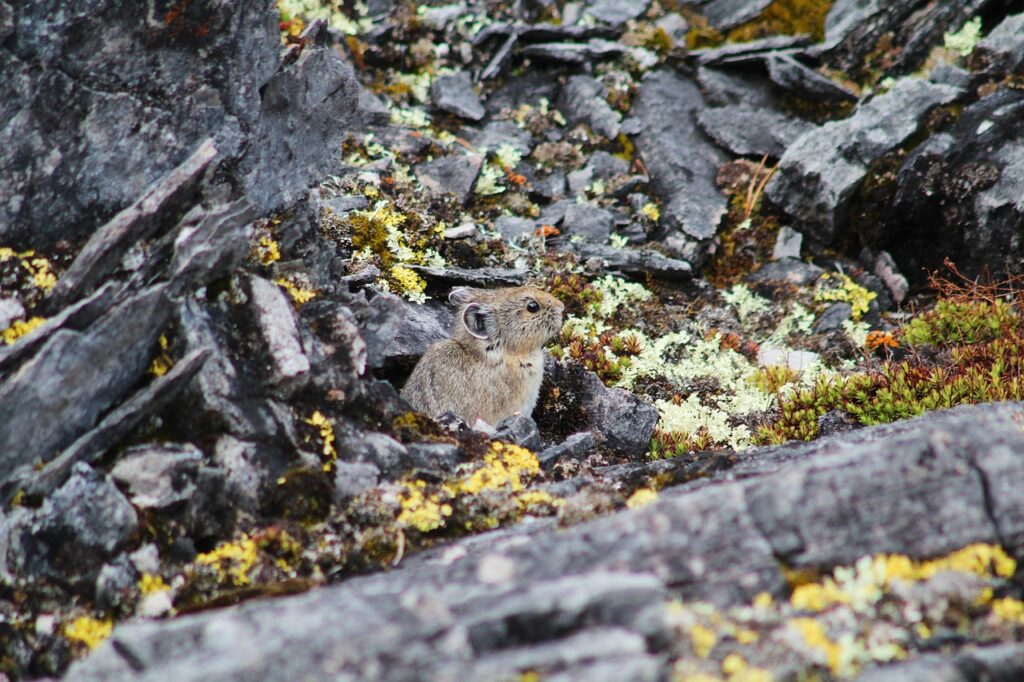 Pin
Pin Image by Caleen from Pixabay
Introduction to Pikas and Their Habitat
Pikas, small herbivorous mammals belonging to the family Ochotonidae, are typically found in rocky mountain environments throughout North America, Europe, and Asia. They thrive in cold climates and high altitudes, where food sources may be limited or seasonal. To adapt to these challenging conditions, pikas exhibit a remarkable food caching behavior, storing food to ensure they have sufficient resources during winter months when foraging is difficult.
The Process of Food Caching
Pikas collect a variety of vegetation, including grasses, wildflowers, and shrub leaves, and transport it to designated areas. This behavior is known as “caching,” where the pika gathers and stores food in organized piles, often referred to as “haypiles.” The process involves several steps:
- Collection: Pikas select edible plant materials, primarily during the summer when vegetation is plentiful and nutrient-rich. They are particularly discerning, choosing plants that are most beneficial for their survival.
- Storage: Once collected, the plants are compacted into haypiles, typically in rocky crevices or sheltered locations. Pikas skillfully arrange the haypiles to maximize their storage efficiency, often layering different types of vegetation based on the expected nutritional value.
- Maintenance: Throughout the caching period, pikas return to their haypiles to monitor their condition. They may periodically add fresh material or remove decaying items to ensure the stored food remains nutritious and unspoiled.
Variability Among Pika Species
The size and structure of haypiles can vary significantly among different pika species, influenced by factors such as local climate, altitude, and ecological conditions. Some species may create larger haypiles to accommodate their larger body sizes and nutritional needs, while others form smaller, more specialized caches.
For example, pikas that inhabit warmer, drier regions may rely on different plant species and create more robust haypiles to endure prolonged nutritional scarcity. In contrast, those in more temperate or wet environments may have access to a wider variety of food sources, resulting in less extensive caching behavior.
Importance of Food Caching to Survival
Food caching is crucial for the survival of pikas, especially in environments where winter snow cover can limit access to food. By storing food, pikas can maintain their energy levels during the harshest conditions, ensuring their survival until spring when foraging resumes. This innate behavior showcases not only their adaptability but also their role in sustaining the complex food webs of their ecosystems.
The food caching behavior of pikas is a sophisticated survival strategy, intricately tied to their environmental conditions and biological needs. It reflects their evolutionary adaptations, emphasizing the importance of resource management in the face of changing climates.
The Impact of Climate Change
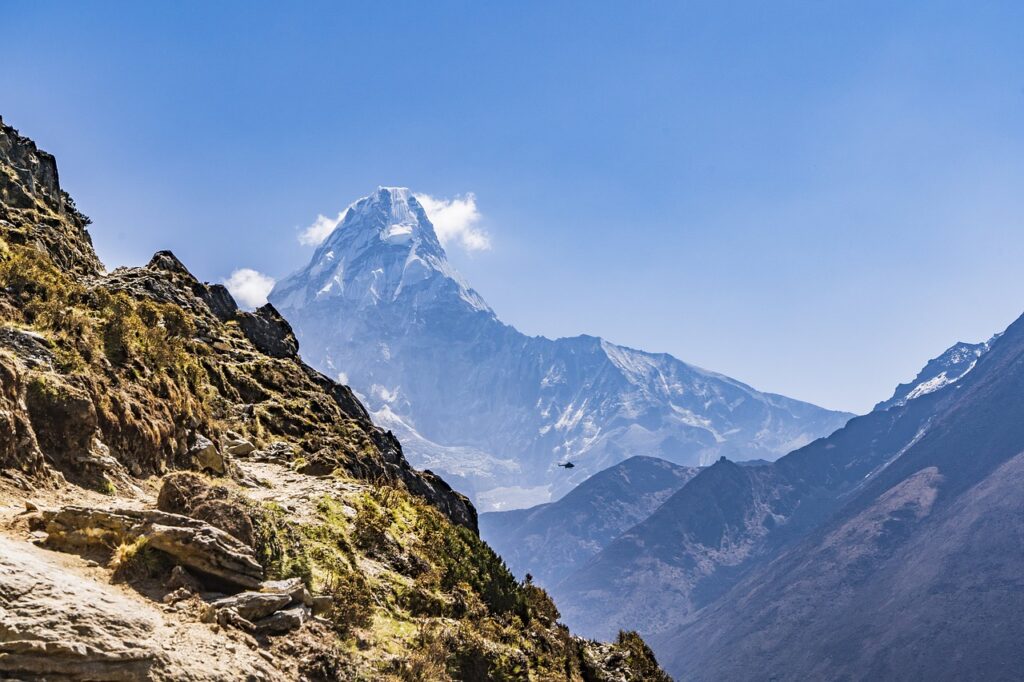 Pin
Pin Image by Dominick Vietor from Pixabay
The Impact of Climate Change on Himalayan Pikas
Himalayan pikas, small mountain-dwelling rodents, are increasingly threatened by climate change, which reshapes their cold habitats and disrupts their ecological balance. As global temperatures rise, the unique alpine ecosystems where these pikas reside face significant alterations.
Temperature Sensitivity and Habitat Loss
Pikas are particularly sensitive to temperature fluctuations. They thrive in cold environments, usually found at elevations where temperatures remain below freezing for substantial parts of the year. However, with climate change, these low temperatures are retreating to higher altitudes. This upward shift in suitable habitats limits the available space for pikas, as they cannot migrate indefinitely due to the rugged terrain and barriers such as cliffs and glaciers.
As glacial ice melts, the alpine meadows where pikas feed are also affected. The loss of snow cover, which serves as insulation, exposes their burrows to extreme temperatures, risking their survival. Additionally, the plants that form the pikas’ diet—such as grasses and sedges—face shifts in growth patterns and availability due to changing climatic conditions. Fewer food sources can lead to nutritional stress and reduced reproductive success.
Impact on Ecosystem Dynamics
The decline of pika populations can have cascading effects on their ecosystems. As herbivores, pikas play a crucial role in maintaining the balance of alpine vegetation. Overgrazing or declining populations can alter plant community structures, which may further impact other species that rely on these plants for food and shelter. As pikas disappear from these ecosystems, the interdependence can unravel, leading to diminished biodiversity.
Adaptation Challenges
Researchers emphasize that pikas are unable to adapt rapidly to changing conditions. Unlike some species that can adjust behaviorally or physiologically to cope with varying climates, pikas have limited means of adaptation. Their specialized habitats restrict their ability to migrate to more favorable climates, compounding their vulnerability.
Conservation Implications
Given the precarious situation of Himalayan pikas, conservation efforts are critical. Protecting existing habitats, restoring degraded areas, and monitoring pika populations can aid in mitigating the impacts of climate change. Additionally, raising awareness about these changes can galvanize broader initiatives aimed at combating global warming.
The survival of Himalayan pikas is linked to climate stability in their mountainous homes. As climate change continues its disruptive path, proactive measures are essential to ensure the future of these remarkable creatures and the ecosystems they inhabit.
Pikas: The Ecosystem Engineers
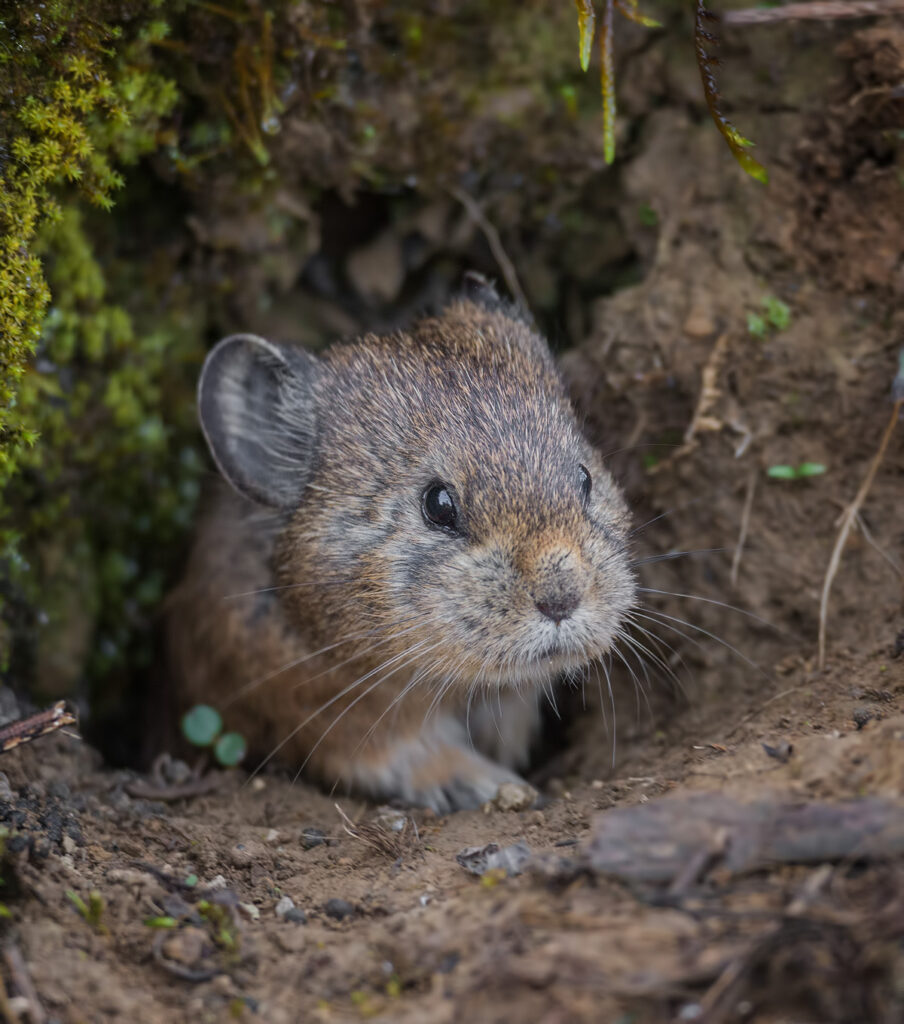 Pin
Pin Image by ross.no
Habitat Creation and Soil Alteration
Pikas are known for their unique behaviors that contribute to their role as ecosystem engineers. They inhabit rocky slopes and alpine regions, where they use their strong forelimbs to dig burrows and create shelters among the rocks. This digging not only provides them with safety from predators but also alters the soil composition and structure. Their burrowing habits aerate the soil, improve drainage, and promote the intermingling of organic material, facilitating a richer soil ecosystem.
Promoting Plant Diversity
One of the most critical contributions of pikas is their impact on plant communities. As pikas gather and store large quantities of vegetation—mainly grasses, herbs, and other alpine plants—for their winter diet, they exert selective pressure on these plant species. This gathering can prevent any single species from dominating the landscape, promoting biodiversity. The plants that survive this selective harvesting often adapt and flourish, resulting in a more stable and diverse ecosystem.
Pikas help to disperse seeds as they collect plant material, further facilitating plant diversity. The remnants of their foraging lead to new growths around their burrows, creating patches of vegetation that can support other wildlife, including insects, birds, and herbivores.
Supporting Food Webs
Pikas serve as a vital food source for various predators, including hawks, foxes, and weasels. By promoting plant health and diversity in their habitats, pikas indirectly support a range of herbivores, which in turn, support carnivores in the food web. The health of the ecosystem, therefore, relies significantly on the activities of these small mammals.
Climate Change Indicators
Pikas are sensitive to environmental changes, particularly temperature fluctuations and the impacts of climate change. As they rely on cold, moist habitats, their population health can serve as an indicator of ecosystem changes. This sensitivity highlights the interconnectedness of ecosystems and emphasizes the need for conservation efforts.
While pikas may be small, their impact on the environment transcends their size. As ecosystem engineers, they enhance soil health, promote biodiversity, and support complex food webs, showcasing the intricate relationships within nature. Their role emphasizes the importance of every species, regardless of how insignificant it may appear.
Human Interaction and Adaptation
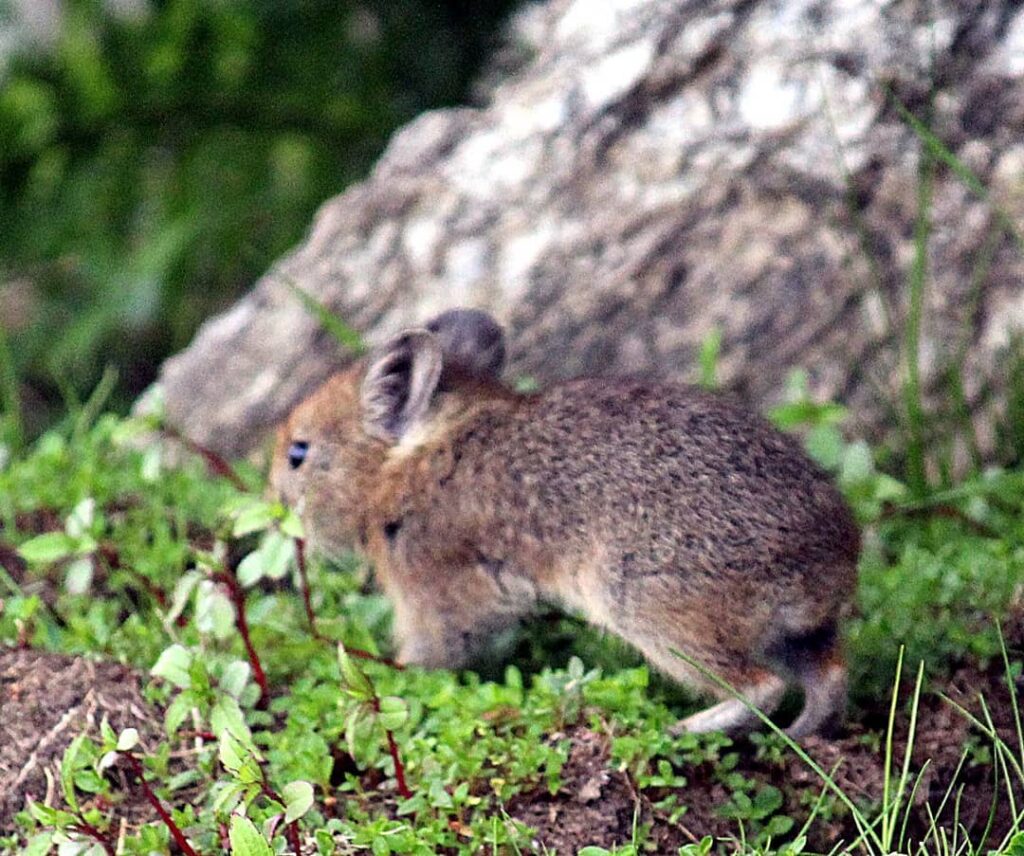 Pin
Pin Image by ezhnomahkah
Himalayan pikas, small mountain-dwelling mammals belonging to theOchotonidae family, primarily inhabit high-altitude regions of the Himalayas. Typically, these creatures maintain a lifestyle characterized by foraging for vegetation and engaging in social interactions within their colonies. While most pikas live in relative isolation from humans, those that do encounter human populations can experience significant behavioral shifts.
When pikas come into contact with humans, particularly in areas where tourism or agricultural activities are prevalent, they often find easy food sources, such as scraps or intentionally provided snacks. This reinforcement of their feeding behavior can foster a dependency on these human-supplied resources, diverting them from their natural foraging instincts. Such dependence may initially seem beneficial; however, it has long-term implications for both pika populations and ecosystem dynamics.
One notable consequence of this interaction is altered adaptability to environmental changes. Pikas are adapted to cold, high-altitude environments, and their survival depends on seasonal behaviors like storing food and establishing territories. When they become reliant on humans for food, their natural instincts to prepare for harsh winter conditions may diminish. This reliance can weaken their resilience against natural stressors, such as climate fluctuations, habitat loss, and food scarcity.
Because Himalayan pikas are sensitive to temperature changes, their environment is becoming increasingly precarious due to climate change. With rising temperatures, pikas are already facing habitat compression as their suitable living areas shrink. A sudden shift in food resources due to human interaction could lead to significant stresses on their populations. Pikas that lose their contact with human-supplied food might struggle to revert to traditional foraging behaviors if their instinctual knowledge of their environment has become disrupted.
Increased human activity in high-altitude areas, including tourism and infrastructure development, can lead to habitat degradation. This shift not only affects food availability but also introduces new competitive pressures, further complicating the pikas’ survival in their modified habitats. Ultimately, while occasional human-pika interactions may appear harmless or even beneficial, they pose complex threats to the long-term viability of pika populations, as well as the ecological integrity of their mountainous environments.
While human-pika interactions can provide short-term benefits, they may lead to greater vulnerabilities over time. Understanding these dynamics is crucial for conservation strategies aimed at protecting these unique mountain dwellers in the face of ongoing environmental changes.
Conclusion
The survival of Himalayan pikas depends heavily on their ability to interpret and react to weather cues. These small mammals are vital indicators of the health of alpine ecosystems, and their responses to environmental changes provide insight into the broader effects of climate change. As warming temperatures and shifting weather patterns threaten their habitat, understanding their behavioral adaptations becomes crucial for conservation efforts. Researching how pikas react to changes in temperature, snowfall, and food availability can help predict the future of not only their populations but also the entire alpine ecosystem. Protecting these creatures and their habitat will contribute to maintaining biodiversity and ecosystem stability in the face of climate change. By prioritizing the study and conservation of Himalayan pikas, we can better grasp the intricate relationships between species and their environment, ultimately aiding in the preservation of vulnerable alpine ecosystems.
FAQs: Himalayan Pikas Use Weather Signals to Plan for Winter
Himalayan pikas are small, fluffy mammals that live in the high-altitude regions of the Himalayas. They are closely related to rabbits and are known for their distinctive, high-pitched calls.
Himalayan pikas prepare for winter by caching food in haypiles. They collect and store vegetation during the warmer months to ensure they have enough resources to survive the harsh winter.
Pikas rely on specific weather patterns, such as temperature changes and the onset of snowfall, to decide when to start their food caching activities. These cues help them determine the optimal time to gather and store food.
Food caching is crucial for pikas because it ensures they have a steady supply of food during the winter when vegetation is scarce. Without this behavior, they would struggle to survive the cold months.
Climate change poses a significant threat to Himalayan pikas by altering their habitat and food sources. Rising temperatures and melting glaciers reduce the cold environments that pikas depend on, making it harder for them to survive.
Pikas are considered “ecosystem engineers” because their activities, such as digging and altering soil conditions, promote plant growth. This supports a diverse array of plant life and provides food for other animals in their habitat.
While most Himalayan pikas rarely encounter humans, those that do can become dependent on them for easy meals. This interaction can sometimes lead to changes in their natural behavior, making them more vulnerable to environmental changes.
Protecting Himalayan pikas involves conserving their natural habitat and addressing the impacts of climate change. Supporting conservation efforts and reducing carbon emissions can help ensure these small but significant creatures continue to thrive.





















